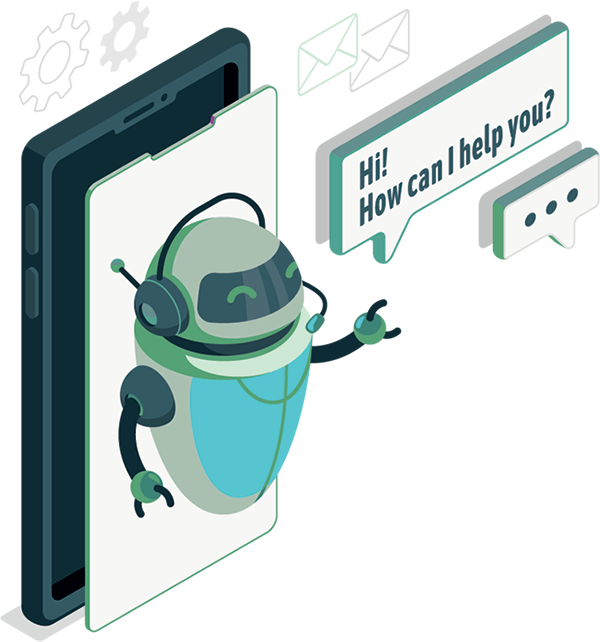Customer experience (CX) has become a true competitive differentiator. Customers have come to expect a positive digital experience, whether dealing with vendors via email, online, or phone. The more frictionless the interaction, the greater the customer loyalty, the more they will buy, and the more referrals they will give to their friends.
As customer expectations rise, providing a positive customer experience becomes more challenging. Customers expect friendly, human interaction and are often disappointed and frustrated by automated menu trees, clunky interfaces, and lengthy wait times. Companies continue to deploy chatbots to provide immediate customer service, but 80% of consumers complain that chatbots just increase their frustration.
Customers should be able to get answers to simple questions quickly. Generative artificial intelligence (AI) tools like ChatGPT are rapidly being adapted to improve automated responses and deliver a better customer experience. Generative AI is essential for any organization that wants to provide a better customer experience.
AI Designed for Conversation
AI platforms like ChatGPT differ from previous automated response systems because AI is designed for conversation and trained by humans. Like any AI system, ChatGPT learns from interactions and improves the quality of responses as it handles more engagements.
Chatbots built on generative AI, like ChatGPT, have the potential to raise online interaction to a new level. With generative AI, generative algorithms create models to fill gaps, such as synthesizing images or videos. Generative AI is frequently used in content creation and is ideally suited for generating conversation since the model is self-training and completes an exchange based on the interaction rather than relying on pre-written, non-generative content.
Unlike other automated solutions, ChatGPT can understand natural language. The AI can recognize the question and its context, providing relevant responses rather than operating from a script or relying on keywords. ChatGPT also improves with use, adapting as the conversation progresses using shared information to customize interaction.
Generative AI, like ChatGPT, has already started to change customer expectations. After dealing with dead-end phone tree menus, getting near-human, personalized responses to queries from generative AI is the new standard for customer service. ChatGPT is the biggest thing to happen to customer service since the smartphone. That’s why more than $15.2 billion has been invested in generative AI companies in the first half of 2023.

ChatGPT versus Chatbots
Large language models (LLMs) like ChatGPT are making conventional chatbots obsolete. According to a Smarty survey, 42% of online shoppers have used a chatbot or virtual assistant to assist with a purchase, but 76% see AI as a technology that will really improve the customer experience.
LLM-powered and conventional chatbots can enhance the customer experience for customer-facing applications.
LLMs are ideal for broad-based responses, which makes them ideal for general queries but less useful for product or topic-specific interactions. LLMs can provide more comprehensive responses to open questions, which means they may not be best to answer questions about a specific product or provide customer assistance.
ChatGPT will undoubtedly play an essential role in customer and consumer support, but initial applications must be nuanced. The challenge will be combining the fluency and expressiveness of ChatGPT with the controls imposed on chatbots. The context for LLM responses will need to be narrowly defined.
Ways ChatGPT Can Enhance CX

ChatGPT will certainly elevate CX and save companies call center and customer support costs. ChatGPT can be a strategic AI tool to improve customer interactions and provide deeper insight. Here are just a few applications companies are exploring:
- Automating customer interaction – ChatGPT can improve the quality of chatbots engaging in realistic dialogue. The more robust the knowledge base used to train the chatbots, the higher the quality of the interaction. Improving the quality of digital interaction will help companies reduce the cost of call center and help desk personnel.
- Responding to online complaints – Search technology can monitor the web for negative reviews and customer complaints, and ChatGPT can formulate responses to address criticism and bad reviews. The LLM algorithms can be customized for tone, so responses are empathetic and tailored for length, using shorter responses for social media and more extended responses for other formats. Human agents must still review responses for accuracy and biases and ensure responses comply with business policies.
- Matching customer sentiment – Contact center personnel must address a wide range of problems, and ChatGPT can help them customize responses to promote a more empathetic and positive customer experience. ChatGPT can prompt agents with responses and classify the customer experience as positive, negative, or neutral.
- Augmenting the knowledge base – Any organization that offers customer sales and service maintains a database of frequently asked questions, user manuals, and prepared scripts to deal with customer queries. AI solutions like ChatGPT put new information at the fingertips of call agents, giving them instant expertise to address any question or issue.
- Translating customer interactions – AI enables international customer service, translating emails, social media queries, and chat sessions into dozens of languages. ChatGPT can’t always translate misspellings or address colloquialisms. Still, it can give agents a chance to deal with routine issues before escalating a query to an agent more proficient in the language.
- Measuring success – Generative AI like ChatGPT can help measure and track activity as part of CX. AI can track customer service agent performance and provide quantifiable metrics. It also can track whether agents offered a new service or tried to upsell a customer and provide real-time information and conversion results to managers.
Increasing revenue from existing customers is easier than selling to new customers. Studies show that loyal customers are five times more likely to return to buy more goods and services, four times more likely to provide a referral, and seven times more likely to try a new product or offer. Providing the best possible customer experience is the easiest way to increase revenue. New generative AI tools like ChatGPT will make it easier and more cost-effective to deliver an exceptional customer experience.
